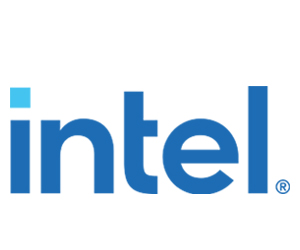Remote work remains the reality for many businesses, even as pressure to resume “normal” operations ramps up. One recent survey found that the number of remote workers is expected to double in 2021 thanks to positive productivity metrics over the last year. Staff preference is also driving this shift: According to data from LiveCareer, 29 percent of employees said they would quit if the option to work remotely was removed.
As a result, companies must be prepared for the development of hybrid frameworks that will have staffers splitting their time between home and office environments.
The challenge: supporting staff with robust connection and device infrastructure. Nearly half of CFOs point to lacking remote work capabilities as an ongoing constraint. Intel’s 11th Gen vPro platform can help companies embrace both the existing — and emerging — realities of remote work to maximize their long-term potential. Here’s how.
DISCOVER: Learn more about remote work tools with Intel.
What Is Intel’s 11th Gen Platform with vPro?
Intel’s vPro platform is designed to empower remote work. “The 11th Gen Intel vPro platform is engineered to directly address business needs,” says Rhett Livengood, director of worldwide business client enabling at Intel, “including remote monitoring and maintenance, implementation of rigorous cybersecurity defenses and ensuring simple, no-contact device deployment.”
The vPro platform accomplishes this goal using a combination of multicore processors, complimentary chipsets and advanced embedded technologies. For example, Intel’s Control-Flow Enforcement Technology was developed to protect against jump-oriented programming (JOP), call-oriented programming (COP) and return-oriented programming (ROP) attacks that have proved difficult for many computing frameworks to detect, identify and remediate.
Intel’s 11th Gen vPro platform also features the proprietary Intel Endpoint Management Assistant (EMA) and Intel Active Management Technology (AMT), which help streamline the process of remote device discovery, repair and monitoring and make it easy for IT teams to securely manage AMT-enabled devices both inside and outside corporate firewalls.
How Intel Benefits Remote Work Operations
In practice, Intel’s 11th Gen vPro platform offers substantive benefits for remote work operations, including:
- Improved performance. The newest generation of vPro offers a 32 percent boost to application performance and 27 percent faster productivity with Microsoft Office 365 when compared with 8th-generation vPro cores. In addition, the use of integrated Intel Wi-Fi 6 and Thunderbolt 4 technologies provides nearly three times faster connection speeds to help ensure employees can remain productive anytime, anywhere.
- Increased security. The vPro platform helps defend remote workers against emerging security threats with Intel Hardware Shield, which offers “below the OS” protection to reduce the risk of compromise. Along with the distinction of being the industry’s first silicon-enabled AI threat detection tool, Intel Hardware Shield increases the security of day-to-day processes by locking down basic input/output system memory when software is running to prevent malware attacks and ensure devices always launch in a trusted state.
- Enhanced reliability. IT staff teams do not have time to deal with device issues — and with many employees still working full-time from home, staff teams need technology that empowers remote issue diagnosis and resolution. The vPro’s EMA and AMT solutions offer a way to streamline asset reliability by providing cloud-ready, out-of-band remote management capabilities. With technology such as power control, remote access and Intel Remote Secure Erase along with vPro, in-house IT teams are equipped to help staff with technology issues no matter when or where they occur.
- Unparalleled management. Unscheduled downtime and service disruptions can significantly reduce staff productivity, and as device landscapes become increasingly complex, the risk of these disruptions ramps up. Intel’s AMT offering, meanwhile, makes it possible to reduce unexpected downtime with scheduled maintenance and on-demand, per-device management.
“In addition to the breadth of functionality and business benefits derived from Intel vPro,” says Livengood, “this technology can also provide organizations with confidence in their long-term stability via the Intel Stable IT Platform Program (SIPP), which helps reduce or eliminate hardware changes before the next-generation PC buying cycle.”
How Intel Empowers the Next Generation of Work
Remote work isn’t going anywhere. Bolstered by improved productivity and bounded by staff preference for flexible employment options, companies must both embrace the reality of remote work as it exists today and prepare for the next generation of hybrid operations.
As Livengood puts it, “Never has business success so heavily depended on putting powerful and secure computing devices into the hands of employees working remotely. PCs built on the Intel vPro platform have the power, speed, connectivity and flexibility to handle today’s — and tomorrow’s — business demands with ease.”
Brought to you by:













